Composition
Photography, of any type, is in short fitting some view, detail or anything which people don’t usually notice in a frame. Every photo frame requires a focal point for people to notice. Photography can be thought of as a short-story, and stories have a subject (or focal point), “the significant” around which rest of the characters (elements) revolve. People looking at a photo should be able to understand the implications in it, which is majorly determined by composition quality. Architecturally speaking, a good composed photo would be able to depict some aspect of a (or multiple) building. Composition techniques, generally same for every photography type, can slightly vary in the way they are used.
Rule of Thirds
Most common composition technique, rule of thirds is simply dividing the frame into 9 equal parts such that every dimension is one-third of total length, both horizontally and vertically. Doing so results in four intersecting points around which subjects/focal point is placed. Elongated subjects can be placed along any one of the vertical or horizontal gridlines. This composition helps make a photo visually pleasing.
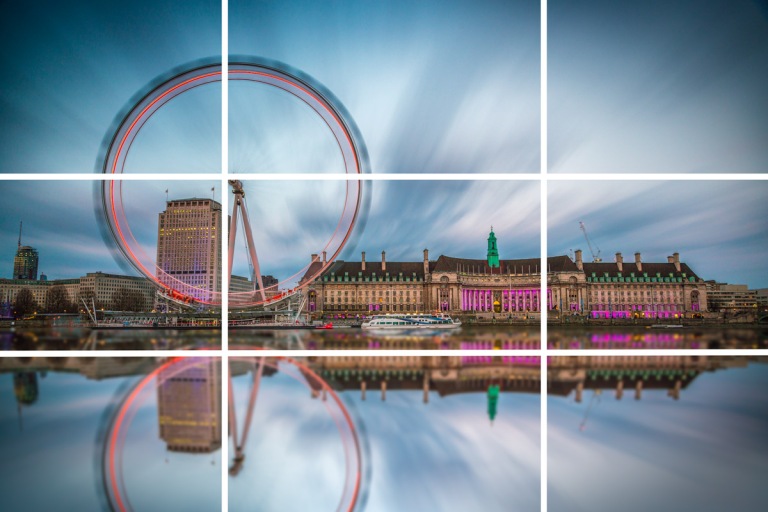
London-Eye, being the subject has been placed at an intersecting point and vertical lines almost splits into halves. Notice how bottom horizontal line defines the subject reflection as well. Reflection being less important feature covers one-third of frame due to gridline.

Here, bottom and right line focus on subject. Lines don’t clearly define the subject as an entity, instead it covers an important café scene bringing attention to it automatically.
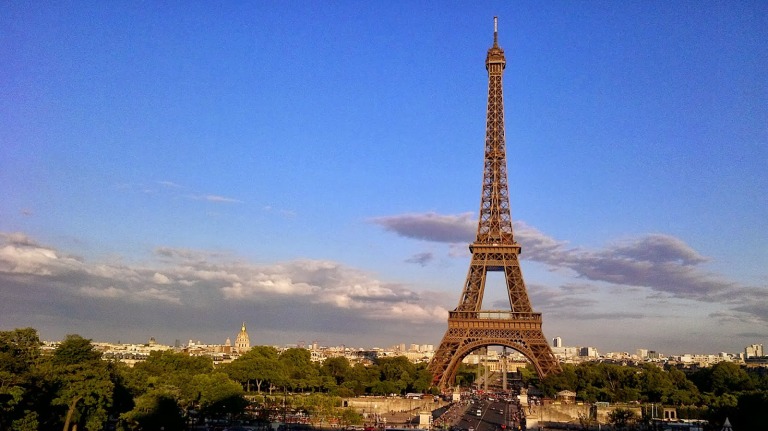
One can imagine right vertical passing through Eiffel tower and bottom line defining Paris skyline keeping city, and most importantly, Eiffel tower in focus.
Leading Lines
Where rule of thirds indirectly brings attention to subject, leading lines directly lead to the subject. Leading lines or paths in general makes viewer think of himself as a part of the scene which defines a good composition since photo should engage viewer at every level rather than being a visual treat. Besides visual quality is determined by other factors as such as lighting, etc. as well.
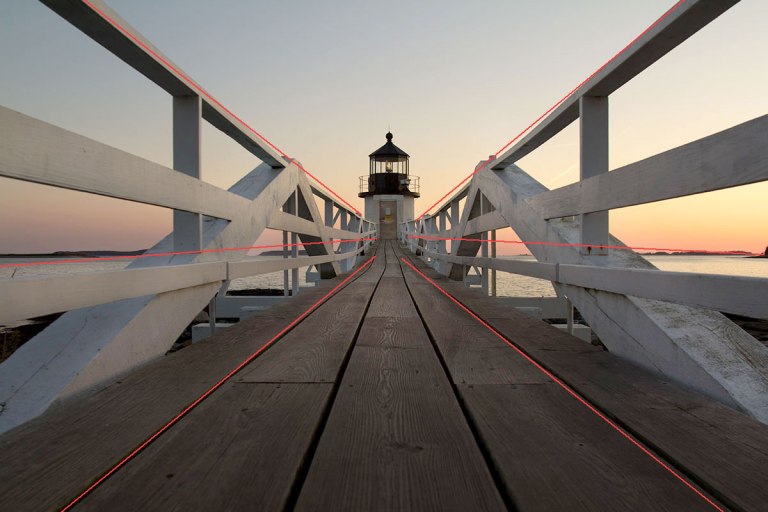
Fences and bridge floor linearly lead towards light tower in photo centre.

Leading lines (windows and wall pattern) strongly point towards sky framed in centre.
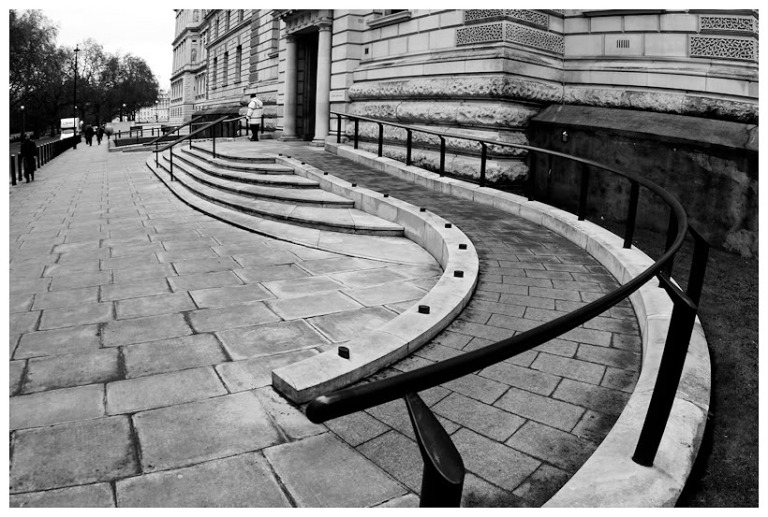
Curved lines leading to building entrance. Rule of thirds can be see working here as well. Person and entrance lie on top and left lines.
Framing
Frame in a frame or framing focus on subject y defining a boundary around it. Framing is, perhaps, the most common technique for architectural photography. Windows, doorways, building structure can be used to frame a scene/subject directly. This explains why photo-frames exist in the first place.
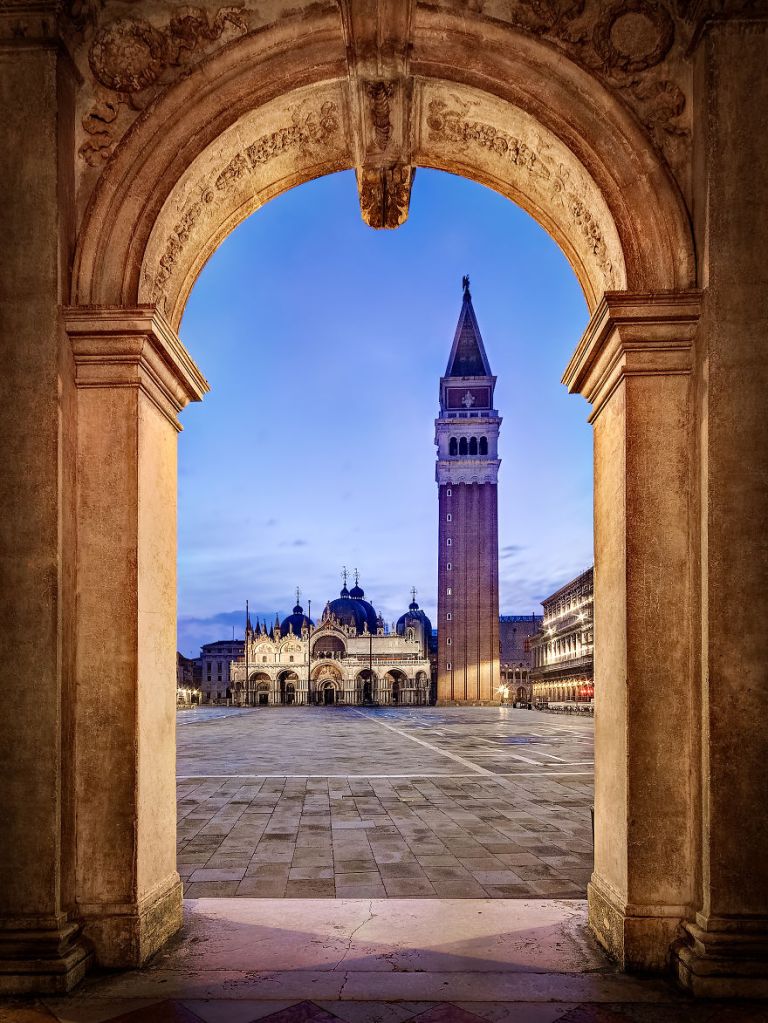
Arch directly framing the Big Ben. Imaginary right line can be seen passing through Big Ben indicative of rule of thirds in action here.

Stone structure indirectly frames the cathedral in the distance.
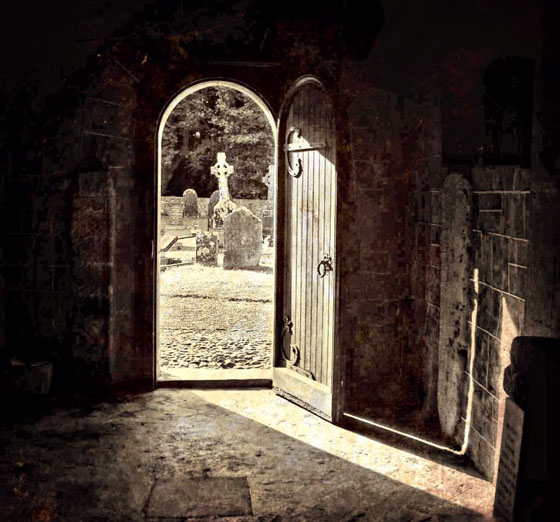
Doorway frames the grave. Light from outside makes it all the more powerful.
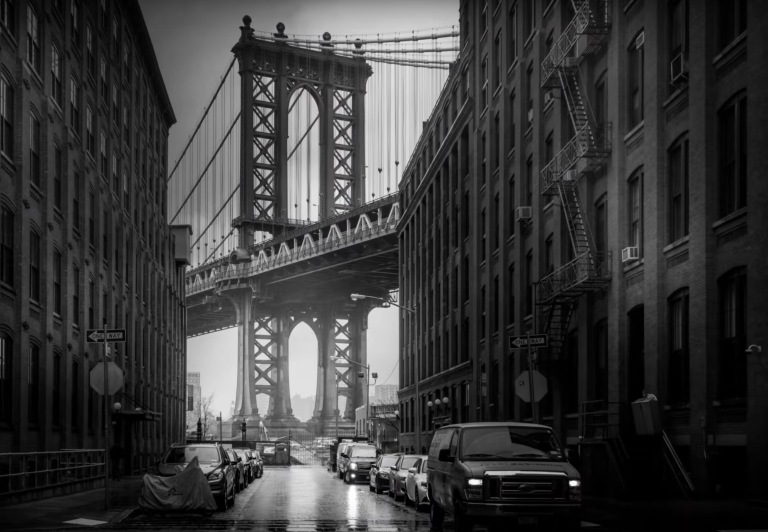
Buildings indirectly frame the Manhattan Bridge and then series of small frames, although less important, gives sense of frames within a frame.
Reflections
If you see a glass or waterbody anywhere that means reflection as a technique will work there. Reflection in a window or water can greatly exaggerate the subject. Simplest example would be of whole city skyline being reflected in sea.
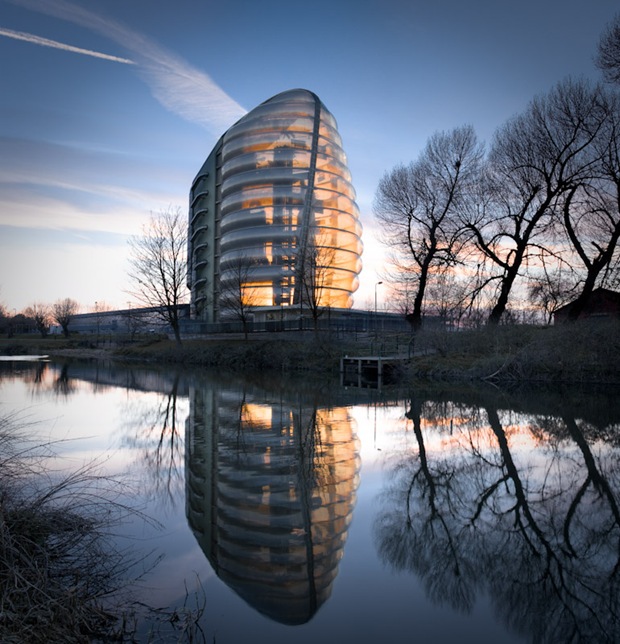
Building is being reflected into the river elongating the subject across waterbody.
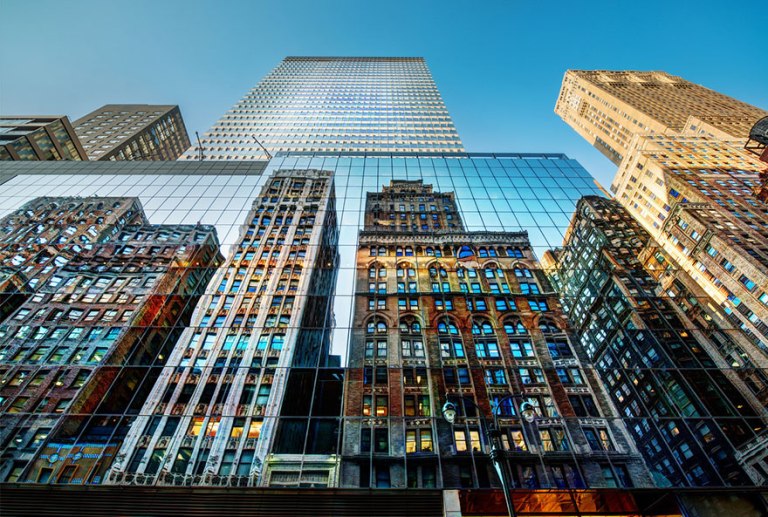
Buildings, at other end, reflected onto the buildings resulting in a near illusion.
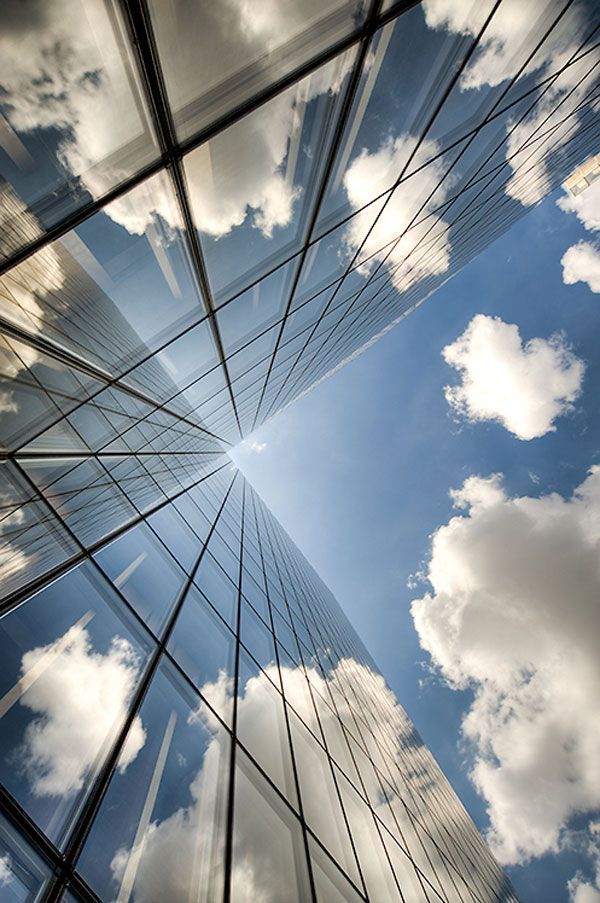
Sky being projected onto glass façade. Leading lines and reflection can be seen working together here.
Vanishing Verticals
Vanishing verticals is a way of utilizing perspective to exaggerate the verticality of structures. This technique works with any building or, in fact, for anything taller than human. Shorter subjects can be captured this way by placing the camera at the bottom though. Cities with taller structures such as New York are commonly photographed this way.

Vanishing verticals can be interpreted as another way of using ‘leading lines’ technique since it is all the more visible in glass buildings.

Height of building roof is being exaggerated here by making columns parallel to camera view vertically.
Foreground/Background
This might sound most boring of techniques but architecture makes it all the more relevant in photography. Buildings can often form background of photos.

Photographing humans or anything (foreground) with famous/tall buildings in the backgrounds is a common practice.

Stone structures in ‘both foreground and middle-ground’ together with sunset in the background form a detailed, stunning photo.
Composition techniques, due to variations, can be used for different purposes, however no technique works alone in majority of the photographs as has been seen in images above.
